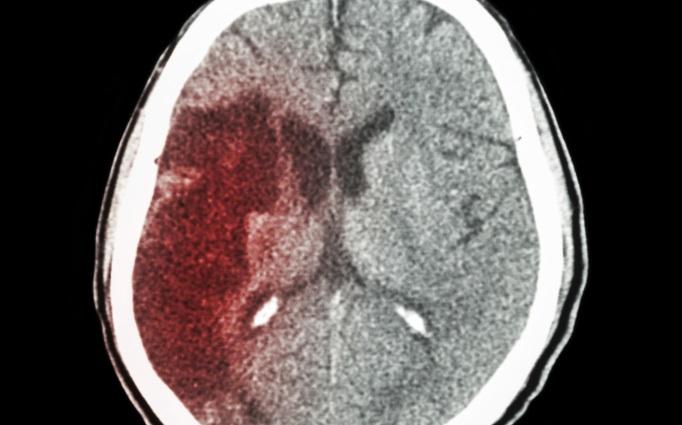Compared with conventional treatment, home-based constraint-induced movement therapy (CIMT) improved perceived quality of movement and performance time among stroke patients with upper limb dysfunction, but was not superior with respect to improving motor function, researchers reported.
CIMT is currently recommended for patients with upper limb dysfunction after stroke; however, little evidence exists to support the implementation of this practice in ambulatory care settings such as the home. Although previous clinical trials have shown significant long-term improvements in arm function with CIMT, more investigation with larger sample sizes and more relevant measurements are needed.
So Anne Barzel, MD, of the University Medical Center Hamburg-Eppendorf in Hamburg, Germany, and colleagues designed a study to assess the potential benefit of home-based CMIT vs standard therapeutic rehabilitation in stroke patients with upper limb dysfunction. The study findings were published in The Lancet Neurology.
From July 2011 to June 2013, Barzel and colleagues enrolled 156 patients from 71 primary care practices in Northern Germany; 85 patients (54%) were randomly assigned to the home-based CIMT group and 71 patients (46%) were randomly assigned to the standard therapy group. Eligible patients had a history of stroke that occurred a minimum of 6 months prior to enrollment with subsequent mild-to-moderate arm function impairment and minimal residual hand function; and those who had a referral for physical or occupational therapy, those who were 18 years of age or older, and those who had a caregiver prepared to serve as a non-professional coach.
Both groups received 5 hours of contact with a physical or occupational therapist, but patients in the home-based CIMT group regularly practiced therapy exercises with the supervision of a non-professional coach, such as a family member, friend, or caregiver. Patients undergoing standard therapy were not required to practice outside of their time with a therapist.
Primary outcomes included self-reported quality-of-movement scores on the Motor Activity Log (MAL-QOM), and assessor-reported performance time on the Wolf Motor Function Test (WMFT-PT). Outcomes were assessed at baseline, 4 weeks, 3 months, and 6 months.
Co-primary study outcomes were changes in activity and changes in motor function of the stroke-affected arm 4 weeks post-intervention.
At 4 weeks, both groups showed an increase in quality of movement of the stroke-affected arm, with the home-based CIMT group exhibiting a greater improvement than the standard therapy group (between-group difference in change from baseline 0.26 on the MAL-QOM; 95% CI: 0.05-0.46; P = .0156). Both groups also exhibited significantly improved performance time; however, there was no significant difference in the extent of the improvement in the CIMT and standard therapy groups (2.65% change from baseline on the WMFT-PT, –17.94 to 28.40; P = .8152).
Six-month follow-up assessments indicated that the home-based CIMT group had a greater improvement in quality of movement and amount of arm use, but neither group showed a difference in functional ability. Both groups experienced only minimal changes and no differences between groups in an analysis of secondary outcomes (hand function, finger dexterity, independence in daily life, and instrumental activities of daily living).
Although home-based CIMT training diaries revealed an average exercise time of 27.7 hours during the 4-week intervention, researchers noted at least 12 instances of patients not adhering to the home-based CIMT protocol due to insufficient exercise time, because the therapy was considered too difficult by the patient or caregiver, or because the therapist did not follow the study protocol.
Ultimately, researchers found that although 4 weeks of home-based CIMT can improve self-reported quality of arm use in activities of daily living, there was no difference in time needed to perform functional tasks or in an analysis of functional outcome (WMFT-PT and WMFT-FA) between groups.
In an accompanying editorial, Ching-Yi Wu and Ku-Chou Chang both of the College of Medicine at Chang Gung University in Taoyuan, Taiwan, praised Barzel and colleagues, calling their study “an important contribution by adapting modified CIMT for stroke rehabilitation in clinical practice.”
However, they pointed out several issues with the study design, including reliance on self-reported outcomes and evidence of bias in respect to treatment dose (with the home CIMT group receiving more treatment).
“Future randomized controlled trials powered with a large number of patients who are representative of the general post-stroke population and a control group matched for dose and treatment location in regular routine practice will be essential to validate the effects of home-based modified CIMT,” wrote Wu and Chang.
References
- Barzel A, Gesche K, Stark A, Tetzlaff B et al. Home-based constraint-induced movement therapy for patients with upper limb dysfunction after stroke (HOMECIMT): a cluster-randomised, controlled trial. Lancet Neurol. 2015;14:893-902.
- Wu CY, Chang KC. Contraint-induced movement therapy translated into practice. Lancet Neurol. 2015;14:869-871.
